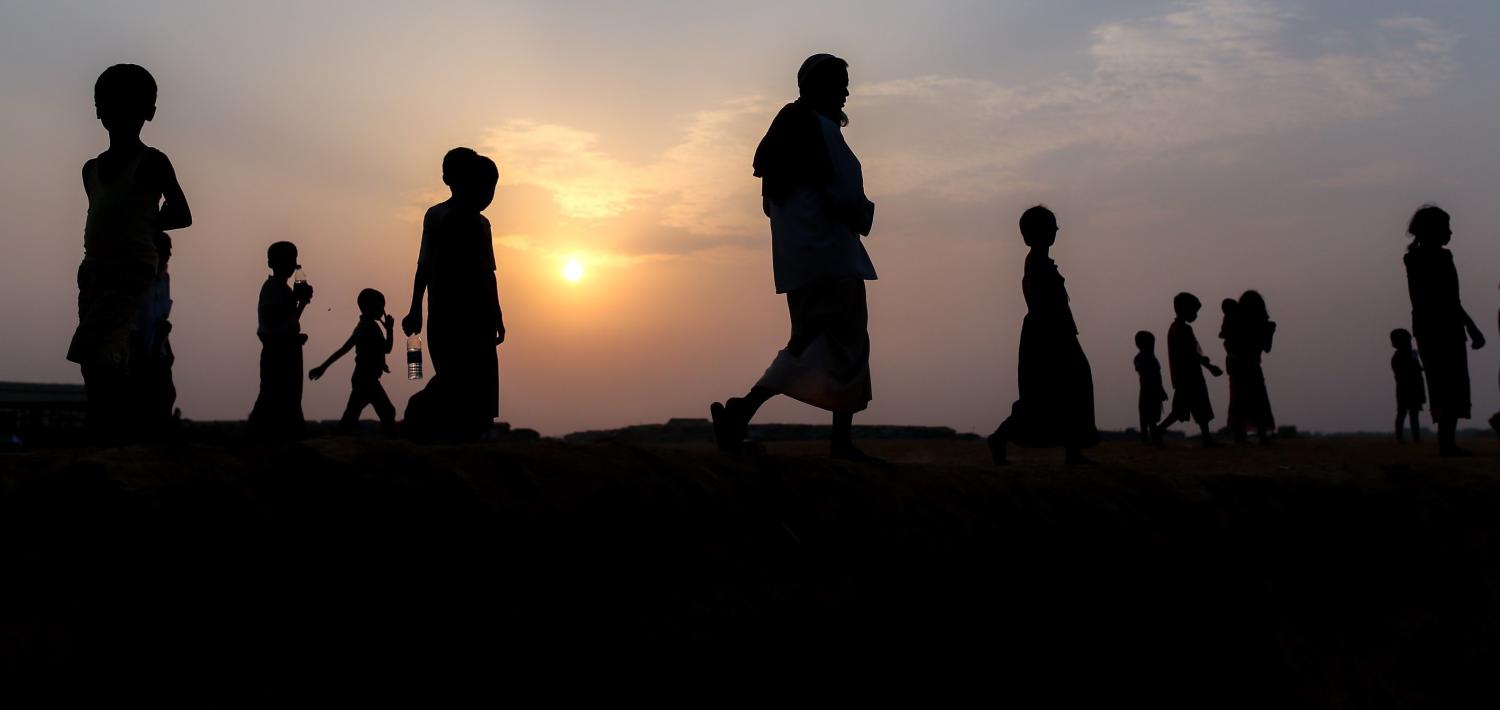Ever since the 1988 pro-democracy uprising, ethnic minority groups, human rights advocates, and others have argued that Myanmar’s armed forces, or Tatmadaw, should be held legally accountable for a wide range of offences. Their concerns were dramatically highlighted in late 2016 and 2017, after the Tatmadaw and police launched “area clearance operations” against the mainly Muslim Rohingya minority in northern Rakhine State.
More than 650,000 refugees were driven into Bangladesh. These events prompted calls for the Myanmar Government and security forces to be brought before an international tribunal for crimes against humanity, including ethnic cleansing and genocide.
For decades, Myanmar’s military leaders have been haunted by the prospect that, one day, they may lose the power to control events and be brought before a court to account for their actions. These fears have been heightened by periodic attempts by the UN Human Rights Council and other bodies to investigate crimes in violation of humanitarian law committed in Myanmar.
To date, international scrutiny, pressure, and diplomatic engagement have not resulted in any meaningful changes. Those implicated in human rights violations have effectively enjoyed impunity. Due to the latest Rohingya crisis, however, pressure to hold them in some way criminally accountable is mounting.
Should this matter ever come before an international court, many issues will need to be considered. Most will relate directly to the atrocities perpetrated against the Rohingyas, those who ordered them and carried them out. However, the tribunal would also need to consider a range of issues to do with the Tatmadaw’s organisation and structure, its training and ethos and, most importantly, issues relating to command and control.
Given the dearth of reliable information available about the Tatmadaw, the consideration of such matters will be difficult. However, they could prove critical to questions of culpability, and thus ultimate responsibility for the actions of the security forces in Rakhine State.
The Tatmadaw is a “fully functioning military”, as the term is popularly understood. It has a clearly defined organisation, a logical division of specialist responsibilities, a hierarchical rank structure, and an identifiable chain of command. It has a tested system of internal communications and a recognisable disciplinary code. It can also be described as effective, in that it is able to convert its diverse resources into combat power.
However, the question must be asked: who is responsible for the behaviour of troops in the field? The easy answer is the Commander-in-Chief. In practice, however, the exercise of military power in Myanmar and, in the recent case of the Rohingyas, its gross misuse tends to be more complicated.
There are in effect two Tatmadaws. One operates according to formal structures and regulations, and places a high value on patriotism, professionalism, and personal integrity. Its members are enjoined to observe both military and civil laws, and to “preserve the noble dignity of the Tatmadaw”.
The other Tatmadaw operates from day to day according to a more informal set of rules and practices that allows for considerable flexibility, including in the observance of military directives and humanitarian law. Particularly during operations against ethnic minorities and the Rohingyas there is a high degree of tolerance, at all levels, of egregious human rights abuses.
Abuse victims and activist groups believe that human rights violations in Myanmar are official policy, ordered by the Tatmadaw’s high command. They argue that troops on operations are told to commit atrocities as deliberate acts of psychological warfare, to undermine the morale of the opposing forces, to intimidate non-combatants, or to force them to leave contested areas.
This has given rise to the oft-repeated claim that atrocities such as rape are used as “weapons of war”. In the case of the Rohingyas in Rakhine State, the systematic nature of the abuses, and the similarity between atrocities perpetrated in different locations, has encouraged the view that they are directed from Naypyidaw.
It is not difficult to find evidence of abuses being committed by soldiers and policemen in Myanmar, but it is difficult to find hard evidence of them specifically being ordered to do so. This is not surprising in the circumstances, but it does argue for caution in claiming that systematic state terror has been and is routinely used by the Tatmadaw’s high command to achieve strategic goals.
Certainly, that appears to be the implicit thinking behind the harsh “four cuts” strategy, as demonstrated in many parts of Myanmar over decades. Also, even if orders are not given, the widespread tolerance of abuses and consistent failure of the military system to punish those guilty of such crimes must encourage them.
In any case, one thing is clear. The latest pogrom against the Rohingyas has been a disaster for everyone. Quite apart from the Rohingyas themselves, more than half a million of whom seem destined to remain in squalid refugee camps in Bangladesh for the foreseeable future, no one has benefited from the events of the past 18 months. Aung San Suu Kyi, her government, the armed forces and the people of Myanmar have all lost, in different ways.
Despite the promise of a more democratic, humane, and prosperous society following the 2015 elections, the country has stepped back into its dark past. This poses real challenges for the international community. For decades, successive governments in Myanmar have strongly resisted external pressures to adopt or adapt particular policies. There are no signs that this record will change in the foreseeable future.
Indeed, with regard to the Rohingyas, there is a rare consensus between the government, armed forces, and population that will strengthen Naypyidaw’s determination to decide its own agenda and timetable for any changes. Unless there are significant shifts in attitude inside Myanmar, which seems unlikely, a fair, durable, and long-term solution to the “Rohingya question”, let alone a formal legal accounting for the events of the past 18 months, will remain a distant prospect.
This article draws from a forthcoming report to be published by the United States Institute of Peace, Myanmar’s Armed Forces and the “Rohingya Question”.

